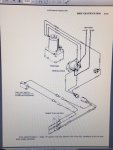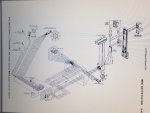rookie456
Petty Officer 3rd Class
- Joined
- Aug 25, 2011
- Messages
- 81
I have a new to me 1980 mercury 80hp ser# 5773499. The tilt and trim was not hooked up when I bought the motor. When I hooked up the tilt and trim, i found out that the motor didnt work, cause it was all rusted inside. I removed the motor and the top of the reservoir and replaced it with a brand new motor and reservoir. The motor works fine going up, but blows the main 20amp fuse when i move the motor down. If I disconnect the blue, green, and black wires that go into the trim motor from the solenoid, I can press the down button on the controls and the main fuse does not blow.
With all of that said, can I assume that the tilt motor is blowing the fuse?
I am thinking that is what is happening, since the fuse doesnt blow when the motor wires are disconnected.
I am attaching a wire diagram of my tilt trim set up, and also a wire diagram of my control box for reference.
Thanks
With all of that said, can I assume that the tilt motor is blowing the fuse?
I am thinking that is what is happening, since the fuse doesnt blow when the motor wires are disconnected.
I am attaching a wire diagram of my tilt trim set up, and also a wire diagram of my control box for reference.
Thanks





















